Traces of recent water on Mars
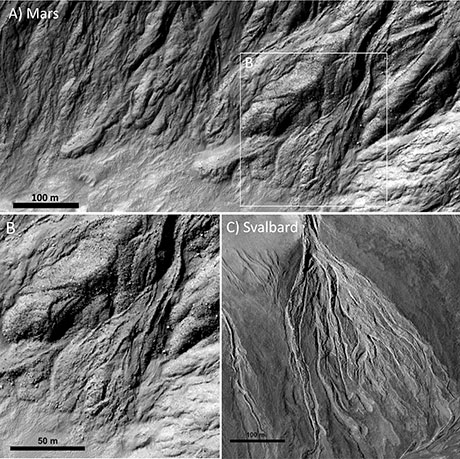 New research has shown that there was liquid water on Mars as recently as 200,000 years ago.
New research has shown that there was liquid water on Mars as recently as 200,000 years ago.
Apr 25th, 2014
Read more
 Subscribe to our Space Exploration News feed
Subscribe to our Space Exploration News feed
 New research has shown that there was liquid water on Mars as recently as 200,000 years ago.
New research has shown that there was liquid water on Mars as recently as 200,000 years ago.
Apr 25th, 2014
Read more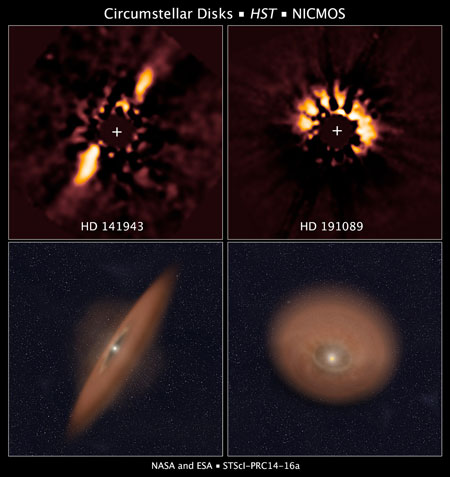 This is an astronomical forensics story of revisiting earlier data with new image processing techniques - and of some tenacious astronomers.
This is an astronomical forensics story of revisiting earlier data with new image processing techniques - and of some tenacious astronomers.
Apr 24th, 2014
Read more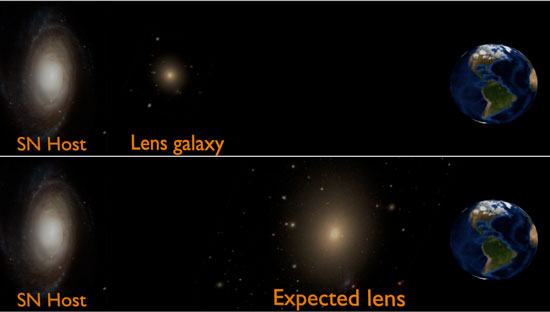 A team of researchers has announced the discovery of a galaxy that magnified a background, Type Ia supernova thirty-fold through gravitational lensing. This first example of strong gravitational lensing of a supernova confirms the team's previous explanation for the unusual properties of this supernova.
A team of researchers has announced the discovery of a galaxy that magnified a background, Type Ia supernova thirty-fold through gravitational lensing. This first example of strong gravitational lensing of a supernova confirms the team's previous explanation for the unusual properties of this supernova.
Apr 24th, 2014
Read more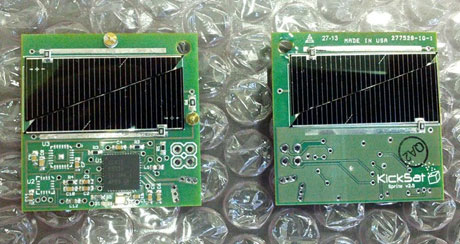 After years of planning and several last-minute delays, about 100 Cornell-developed mini satellites demonstrating space flight at its simplest have launched into orbit and are now circling Earth.
After years of planning and several last-minute delays, about 100 Cornell-developed mini satellites demonstrating space flight at its simplest have launched into orbit and are now circling Earth.
Apr 24th, 2014
Read more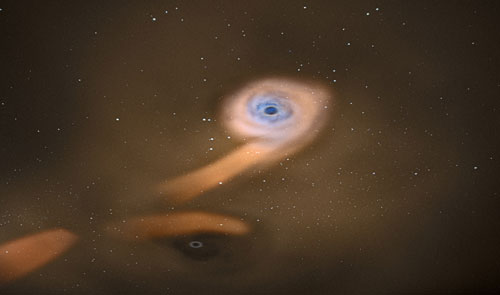 Unique pair of supermassive black holes in an ordinary galaxy discovered by XMM-Newton.
Unique pair of supermassive black holes in an ordinary galaxy discovered by XMM-Newton.
Apr 24th, 2014
Read more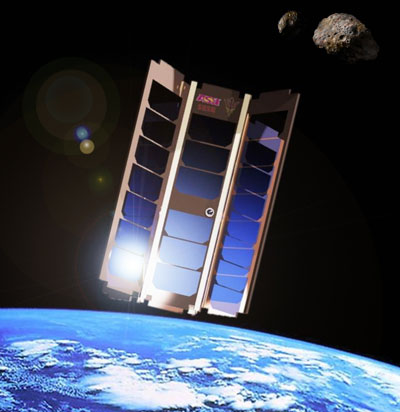 A team at Arizona State University is building its own 'patch of asteroid' inside of a small spinning satellite that will allow researchers to conduct experiments with the rocks in space.
A team at Arizona State University is building its own 'patch of asteroid' inside of a small spinning satellite that will allow researchers to conduct experiments with the rocks in space.
Apr 23rd, 2014
Read moreRecent evidence that the universe expanded from microscopic to cosmic size in a mere instant brings with it important implications. During a live Google Hangout, leading astrophysicists from the University of Chicago and Stanford University discussed what this potential 'crack in the cosmic egg' means for our understanding of the universe.
Apr 23rd, 2014
Read moreWhat if spacetime were a kind of fluid? This is the question tackled by theoretical physicists working on quantum gravity by creating models attempting to reconcile gravity and quantum mechanics.
Apr 23rd, 2014
Read more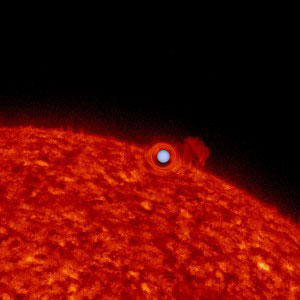 What looked at first like a sort of upside-down planet has instead revealed a new method for studying binary star systems, discovered by a University of Washington student astronomer.
What looked at first like a sort of upside-down planet has instead revealed a new method for studying binary star systems, discovered by a University of Washington student astronomer.
Apr 22nd, 2014
Read more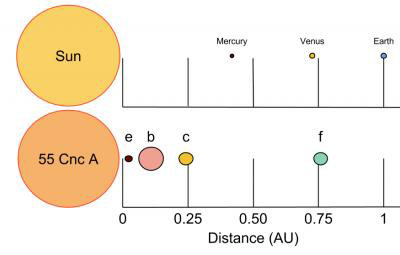 Mysteries of one of the most fascinating nearby planetary systems now have been solved. The study presents the first viable model for the planetary system orbiting one the first stars discovered to have planets.
Mysteries of one of the most fascinating nearby planetary systems now have been solved. The study presents the first viable model for the planetary system orbiting one the first stars discovered to have planets.
Apr 22nd, 2014
Read more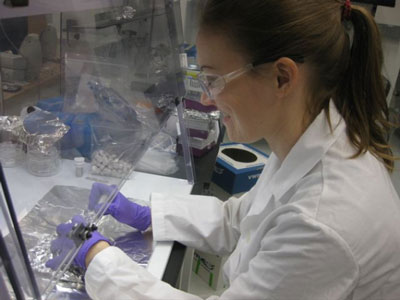 Ancient Earth might have had an extraterrestrial supply of vitamin B3 delivered by carbon-rich meteorites, according to a new analysis by researchers. The result supports a theory that the origin of life may have been assisted by a supply of key molecules created in space and brought to Earth by comet and meteor impacts.
Ancient Earth might have had an extraterrestrial supply of vitamin B3 delivered by carbon-rich meteorites, according to a new analysis by researchers. The result supports a theory that the origin of life may have been assisted by a supply of key molecules created in space and brought to Earth by comet and meteor impacts.
Apr 17th, 2014
Read more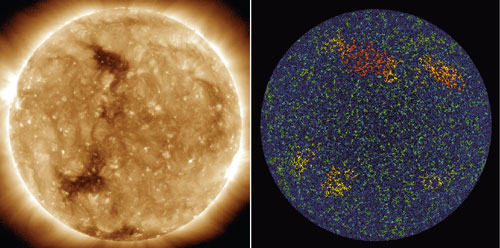 Like a balloon bobbing along in the air while tied to a child's hand, a tracer has been found in the sun's atmosphere to help track the flow of material coursing underneath the sun's surface.
Like a balloon bobbing along in the air while tied to a child's hand, a tracer has been found in the sun's atmosphere to help track the flow of material coursing underneath the sun's surface.
Apr 17th, 2014
Read more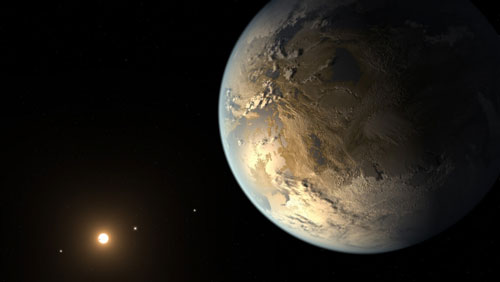 Using NASA's Kepler Space Telescope, astronomers have discovered the first Earth-size planet orbiting a star in the 'habitable zone' - the range of distance from a star where liquid water might pool on the surface of an orbiting planet. The discovery of Kepler-186f confirms that planets the size of Earth exist in the habitable zone of stars other than our sun.
Using NASA's Kepler Space Telescope, astronomers have discovered the first Earth-size planet orbiting a star in the 'habitable zone' - the range of distance from a star where liquid water might pool on the surface of an orbiting planet. The discovery of Kepler-186f confirms that planets the size of Earth exist in the habitable zone of stars other than our sun.
Apr 17th, 2014
Read more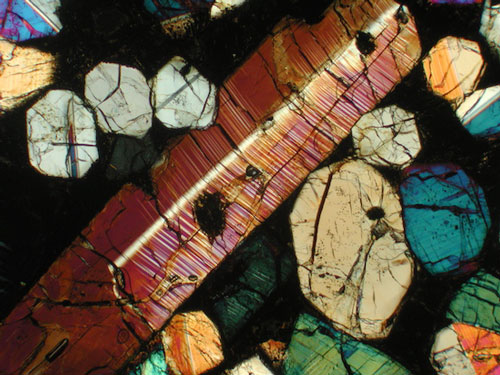 Geologists analyzed 40 meteorites that fell to Earth from Mars to understand the history of the Martian atmosphere. They show the atmospheres of Mars and Earth diverged in important ways early in the solar system's 4.6 billion year evolution.
Geologists analyzed 40 meteorites that fell to Earth from Mars to understand the history of the Martian atmosphere. They show the atmospheres of Mars and Earth diverged in important ways early in the solar system's 4.6 billion year evolution.
Apr 17th, 2014
Read more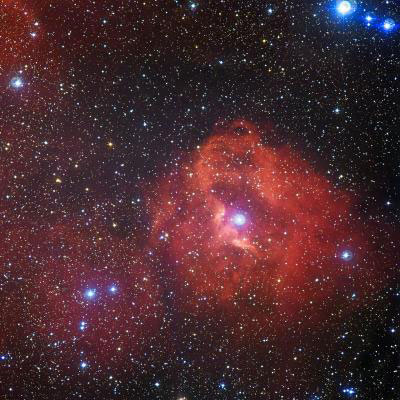 This new image from ESO's La Silla Observatory in Chile reveals a cloud of hydrogen called Gum 41. In the middle of this little-known nebula, brilliant hot young stars are giving off energetic radiation that causes the surrounding hydrogen to glow with a characteristic red hue.
This new image from ESO's La Silla Observatory in Chile reveals a cloud of hydrogen called Gum 41. In the middle of this little-known nebula, brilliant hot young stars are giving off energetic radiation that causes the surrounding hydrogen to glow with a characteristic red hue.
Apr 16th, 2014
Read more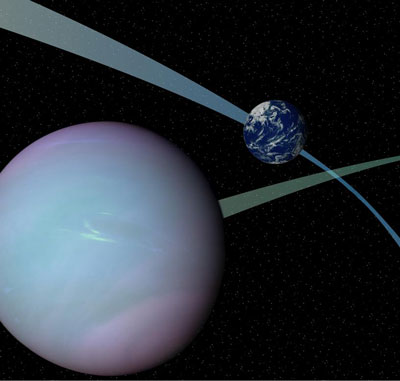 A fluctuating tilt in a planet's orbit does not preclude the possibility of life, according to new research. In fact, sometimes it helps.
A fluctuating tilt in a planet's orbit does not preclude the possibility of life, according to new research. In fact, sometimes it helps.
Apr 15th, 2014
Read more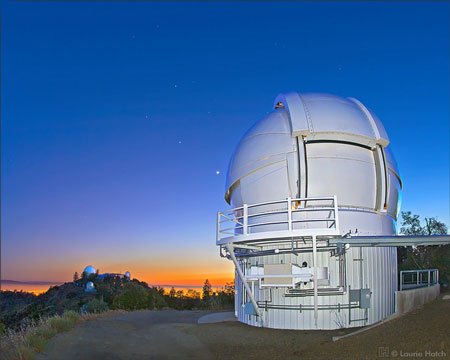 People around the world are being invited to learn how to hunt for planets, using two new online apps devised by scientists at the University of Texas at Austin and UC Santa Cruz.
People around the world are being invited to learn how to hunt for planets, using two new online apps devised by scientists at the University of Texas at Austin and UC Santa Cruz.
Apr 15th, 2014
Read moreMuch like an environment influences people, so too do cosmic communities affect even giant dazzling stars: Peering deep into the Milky Way galaxy's center from a high-flying observatory, astronomers have discovered identical, rare stars whose diverging dusty and gaseous garb are strictly influenced by an intrusive cluster of neighbors.
Apr 14th, 2014
Read more